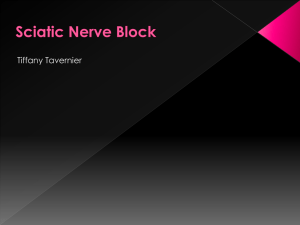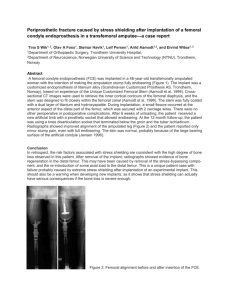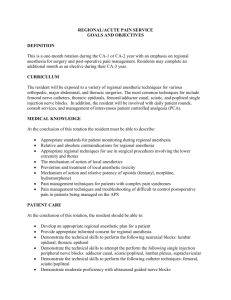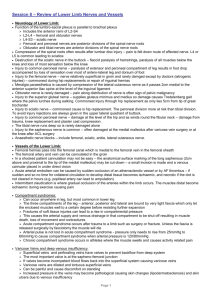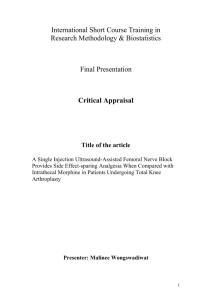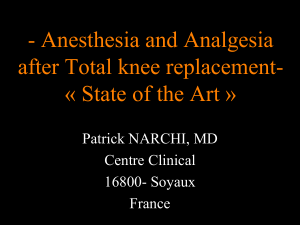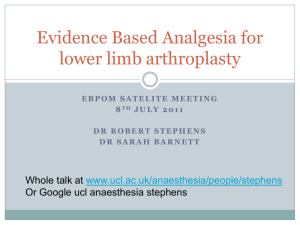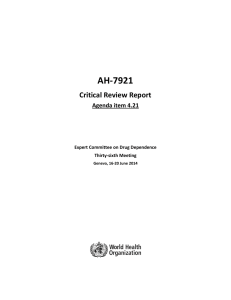Anderson C, Heeley E, Huang Y, et al. Rapid Blood Pressure
advertisement
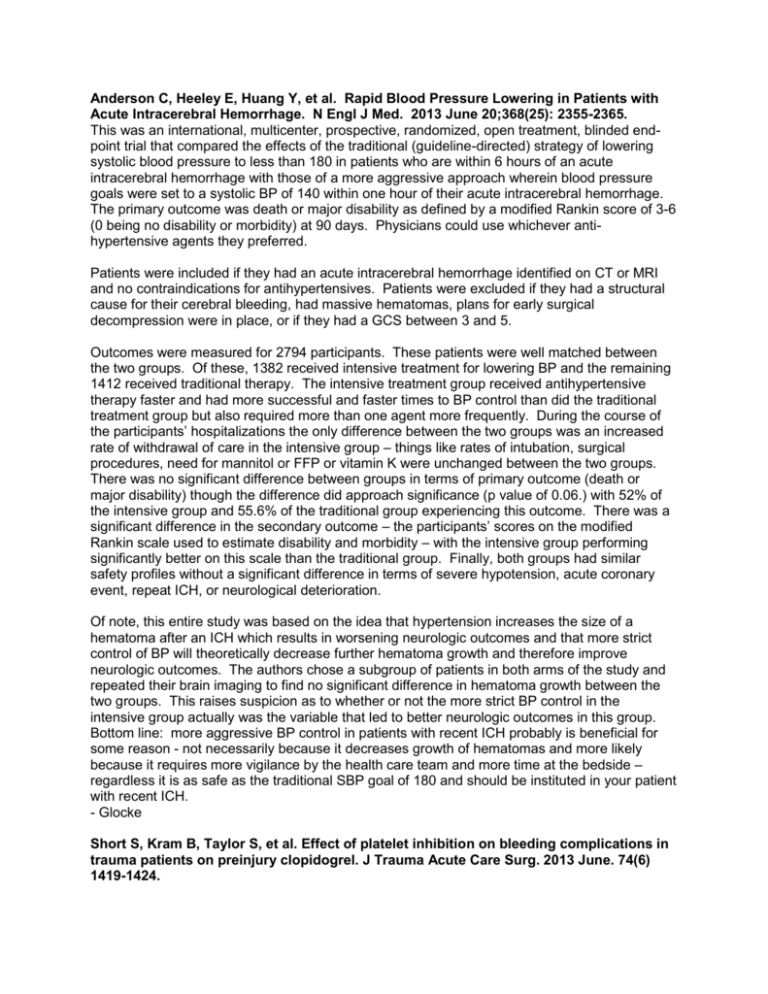
Anderson C, Heeley E, Huang Y, et al. Rapid Blood Pressure Lowering in Patients with Acute Intracerebral Hemorrhage. N Engl J Med. 2013 June 20;368(25): 2355-2365. This was an international, multicenter, prospective, randomized, open treatment, blinded endpoint trial that compared the effects of the traditional (guideline-directed) strategy of lowering systolic blood pressure to less than 180 in patients who are within 6 hours of an acute intracerebral hemorrhage with those of a more aggressive approach wherein blood pressure goals were set to a systolic BP of 140 within one hour of their acute intracerebral hemorrhage. The primary outcome was death or major disability as defined by a modified Rankin score of 3-6 (0 being no disability or morbidity) at 90 days. Physicians could use whichever antihypertensive agents they preferred. Patients were included if they had an acute intracerebral hemorrhage identified on CT or MRI and no contraindications for antihypertensives. Patients were excluded if they had a structural cause for their cerebral bleeding, had massive hematomas, plans for early surgical decompression were in place, or if they had a GCS between 3 and 5. Outcomes were measured for 2794 participants. These patients were well matched between the two groups. Of these, 1382 received intensive treatment for lowering BP and the remaining 1412 received traditional therapy. The intensive treatment group received antihypertensive therapy faster and had more successful and faster times to BP control than did the traditional treatment group but also required more than one agent more frequently. During the course of the participants’ hospitalizations the only difference between the two groups was an increased rate of withdrawal of care in the intensive group – things like rates of intubation, surgical procedures, need for mannitol or FFP or vitamin K were unchanged between the two groups. There was no significant difference between groups in terms of primary outcome (death or major disability) though the difference did approach significance (p value of 0.06.) with 52% of the intensive group and 55.6% of the traditional group experiencing this outcome. There was a significant difference in the secondary outcome – the participants’ scores on the modified Rankin scale used to estimate disability and morbidity – with the intensive group performing significantly better on this scale than the traditional group. Finally, both groups had similar safety profiles without a significant difference in terms of severe hypotension, acute coronary event, repeat ICH, or neurological deterioration. Of note, this entire study was based on the idea that hypertension increases the size of a hematoma after an ICH which results in worsening neurologic outcomes and that more strict control of BP will theoretically decrease further hematoma growth and therefore improve neurologic outcomes. The authors chose a subgroup of patients in both arms of the study and repeated their brain imaging to find no significant difference in hematoma growth between the two groups. This raises suspicion as to whether or not the more strict BP control in the intensive group actually was the variable that led to better neurologic outcomes in this group. Bottom line: more aggressive BP control in patients with recent ICH probably is beneficial for some reason - not necessarily because it decreases growth of hematomas and more likely because it requires more vigilance by the health care team and more time at the bedside – regardless it is as safe as the traditional SBP goal of 180 and should be instituted in your patient with recent ICH. - Glocke Short S, Kram B, Taylor S, et al. Effect of platelet inhibition on bleeding complications in trauma patients on preinjury clopidogrel. J Trauma Acute Care Surg. 2013 June. 74(6) 1419-1424. This retrospective cohort study done at a single center Level 1 trauma center included trauma patients aged 18 years and older who had documented use of clopidogrel as a home medication prior to admission; seen between Oct 2009 and Aug 2011. Study looked at degree of platelet inhibition (PI) using P2Y12 assay and assessed for bleeding complications. Patients excluded were those who did not receive the P2Y12 Assay; those with platelet count less than 100,000; or concurrent use with another blood thinner. Study found that 46.7% of patients enrolled had PI <20%; primary outcome showed that patients with PI of >20% had similar bleeding complications to those with PI <20% (24.2% compared to 27.6% - 8 patients in each group). Secondary outcomes included: 7 patients required NSG intervention (4 with PI >20%). More patients received PLTs when the PI was >20% (51.5% vs 10.3%, p=0.0008) although this could have been due to provider bias as no difference in clinical picture between the groups was noted. Study limited by lack of verification of patient compliance with pre-trauma clopidogrel dosing and timing; and inability to control for trauma-associated coagulopathy. Impact of this study only raises more questions: is it worthwhile to know the PI if it only causes unnecessary platelet transfusions? At what level does the PI matter? Is there a level at which you should be hyper vigilant about the patient’s bleeding risks? For our patient policy, this study does not show a clear indication for ordering a platelet inhibition assay, but instead the potential for harm for unnecessary platelet transfusions based solely on a lab value. - Drenton Beaudoin FL, Haran JP, Liebmann O. A Comparison of Ultrasound-guided Three-in-one Femoral Nerve Block Versus Parenteral Opioids Alone for Analgesia in Emergency Department Patients With Hip Fractures: A Randomized Controlled Trial. Acad Emerg Med. 2013;20(6):584-91. This is a blinded, randomized control trial, which compared ultrasound-guided femoral nerve blocks versus parenteral opioids alone for analgesia in patients with acute hip fractures. This was conducted at Rhode Island Hospital (single site, large academic urban center) over a period of 18 months. A total of 36 patients were randomized to two arms. The femoral nerve block group received 25 ml of bupivacaine + parenteral morphine. The placebo group received 5 mL normal saline + parenteral morphine. Rescue parenteral analgesia could be administered to both groups at the discretion of the treating physician 15 minutes after the femoral nerve blocks or placebo blocks had been placed. Inclusion criteria: age >55, radiographically proven femoral neck or intertrochanteric fractures, normal lower neurovascular exam, ability to consent, moderate to severe pain (>5). Exclusion criteria included anticoagulation with INR >3.0, prior femoral artery vascular surgery on same side as fracture, other trauma, hypoxia, hypotension, hypersensitivity to morphine or local anesthesia. Results assessed subjective pain score at baseline and at four hours between the two groups. The femoral nerve block group had a statistically significant (p<0.001) decrease in pain at four hours compared to the morphine-only group with a subjective pain score of 8.0 and 8.3 respectively at baseline to 4.0 and 8.0 respectively four hours later. Secondary outcome looked at amount of rescue analgesia required between the two groups. The femoral nerve group required less rescue analgesia than the morphine-only group with p 0.028 with a range of 2-6mg morphine equivalents in the femoral nerve block group and 2-21mg morphine equivalents in the morphine only group. Of note there were no differences between the rates of hypotension, hypoxia, nausea or vomiting between the two groups. Overall impact: Shows statistically significant improvement in the patients’ perceived pain over time with the femoral nerve blocks. Also shows decrease in the amount of parenteral opioids required, however both groups had similar rates of hypotension, hypoxia, nausea and vomiting. Limitation: Study did not have a standardized approach to the administration of rescue analgesia, which varied, between treating physicians and may account for the differences in the amount of rescue analgesia given. The study was not powered to assess adverse outcomes related to the femoral nerve blocks. While there is statistically significant reduction in pain in the femoral nerve group, one third of the patients had no improvement. Overall femoral nerve blocks appear to be a good adjunct to parenteral analgesia and in the elderly population would possibly help reduce the amount of adverse effects caused by opioids and could be a useful tool for older patients with hip fractures. - Chima

